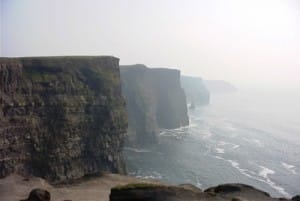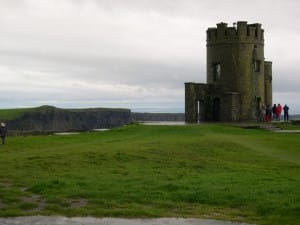A Natural Wonder That Inspires
 When it comes to beautiful natural landscapes, the country of Ireland certainly has its fair share. From rolling green hills to peaceful pastures and the many fascinating medieval structures found throughout the countryside, it’s no wonder this destination has found itself memorialized in so many pictures and works of art over the centuries. One of the most spectacular natural scenes to behold is the famous Cliffs of Moher. Located on the west coast, these magnificent rock formations have stood the test of time, still serving as one of the most popular points of interest in the country.
When it comes to beautiful natural landscapes, the country of Ireland certainly has its fair share. From rolling green hills to peaceful pastures and the many fascinating medieval structures found throughout the countryside, it’s no wonder this destination has found itself memorialized in so many pictures and works of art over the centuries. One of the most spectacular natural scenes to behold is the famous Cliffs of Moher. Located on the west coast, these magnificent rock formations have stood the test of time, still serving as one of the most popular points of interest in the country.
The Cliffs of Moher boast a long, rich history. Believed to have been formed an astonishing 320 million years ago, during the Carboniferous period, the Cliffs of Moher were originally the site of a gigantic river delta. The formation’s name was derived from a 1st century fort, “Mothar”, which has long since fallen into ruin but at which site a Napoleonic signal tower was constructed in its place in 1803.
What is probably most amazing to people when they witness the cliffs is their size. Rising to an incredible height of more than 700 feet, and stretching south for nearly five miles, the massive cliffs are an amazing feat of nature. They are almost completely vertical and boast an almost sheer drop into the crashing Atlantic below. The views are absolutely awe-inspiring.
 At the highest point of the cliffs sits O’Brien’s Tower. It was built in 1835 by Cornelius O’Brien as an observation point for the hundreds of tourists who, even back then, made their way to the rocky edges to take in the sights. Today the tower still stands proudly as a beacon and serves as the perfect vantage point from which to witness the majestic cliffs and surrounding scenery below. O’Brien’s Tower and the Cliffs of Moher are located just a short distance from the quaint, friendly village of Doolin, famous for its traditional music. Nearby Liscannor, known for its slate flagstones once used for fencing purposes, is also a short distance away.
At the highest point of the cliffs sits O’Brien’s Tower. It was built in 1835 by Cornelius O’Brien as an observation point for the hundreds of tourists who, even back then, made their way to the rocky edges to take in the sights. Today the tower still stands proudly as a beacon and serves as the perfect vantage point from which to witness the majestic cliffs and surrounding scenery below. O’Brien’s Tower and the Cliffs of Moher are located just a short distance from the quaint, friendly village of Doolin, famous for its traditional music. Nearby Liscannor, known for its slate flagstones once used for fencing purposes, is also a short distance away.
To add to the area’s natural beauty, the Cliffs of Moher are also home to a number of nesting seabirds. These species include the Atlantic Puffin, Razorbill, Chough and Common Gull. In 1988 the area was officially designated as a Refuge for Fauna and as a Special Protection Area for Birds (SPA) a year later. What this means for visitors is a chance to witness some beautiful wildlife in its natural (and magnificent) environment.
Whether it’s the breathtaking views and natural wonders that inspire you, or the fascinating history of the ancient buildings and towns located nearby, a visit to the Cliffs of Moher is something not to be missed.
